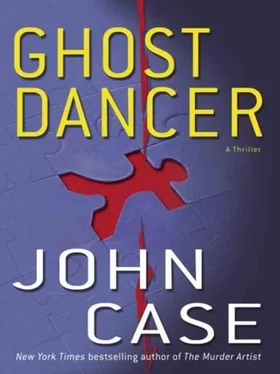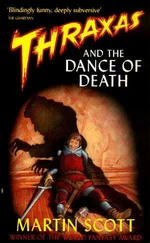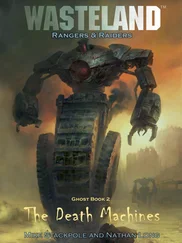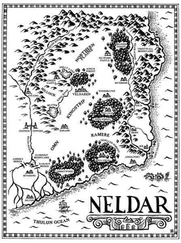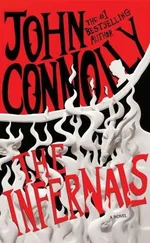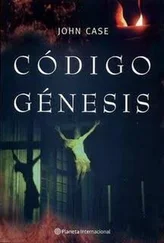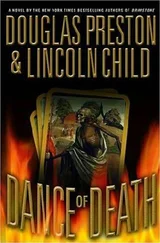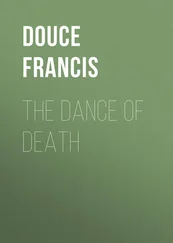The main cabin of the ferry was filled with uniformed schoolkids returning from a trip to the big city. They were filled with youthful energy, teasing and flirting, relentlessly mobile, whooping with laughter.
Not so, himself. He felt like a hermit crab, hunkered into his Burberry, dark thoughts behind his eyes.
DUBLIN | JUNE 5, 2005
Back at home, Burke fell into a dark funk, one pointless day collapsing into the next. More than two weeks slid by as Burke did nothing but watch the tube and drink. Most nights, he slept in his clothes.
He felt trapped.
He was furious with Kovalenko, yes, but his anger extended to Jack Wilson, too. The moment Francisco d’Anconia walked into Aherne & Associates’ offices, there was only one way things were ever going to work out, and that was with Mike Burke holding the bag.
But it wasn’t just anger he felt. Beyond that, he was worried. All of a sudden, Kovalenko had more important priorities than Jack Wilson, not the least of which was his gallbladder. How long had that been going on? Burke wondered. Then he remembered the phone conversation he’d had with Kovalenko’s subordinate, or whoever he was: You’re in a lot of trouble, my friend. Were they all like that? Was it in the job description, that you had to be a dick? What was it he’d said about Kovalenko? He’s in the shop.
It hadn’t made sense, but now it did. Kovalenko was in the hospital, or at the doctor’s, or something. And now he was having surgery. Christ, Burke thought, Kovalenko’s not even paying attention.
And if Kovalenko wasn’t worried about Wilson, who would be? Burke might take the story elsewhere, but… where? He didn’t have enough to persuade anyone who could do anything about it that Wilson was dangerous.
On a few occasions, when Burke had managed to tear himself away from the tube, he’d done a little research into particle beam or “directed energy” weapons – enough to know that, even in the midst of the Iraq war, the Pentagon was pouring money into it. A firm in Virginia was developing something called StunStrike, a device that worked off a Tesla coil and delivered a small bolt of lightning to blind and stun combatants. Raytheon was doing its own work in the field, devising weapons that could knock out the electronics of things like Stinger missiles, land mines, drones, and even aircraft.
Another project, based on the same basic technology, involved a beam that could microwave a crowd – or the inhabitants of a building. Essentially, the beam heated the water in the human body to a point where victims felt as if they’d received an instant sunburn. It more or less stopped them in their tracks, and the beauty of it was that afterward, they were fine. So it had civilian applications. Crowd control. Preventing stampedes. And then, if the people in front of you didn’t stop, you could ratchet up the setting until they felt like they were on fire. Jack it up a little more, and you’d boil them until their skin split.
Kovalenko might have known about these Pentagon efforts, but he wouldn’t connect them to Tesla, whose heyday had been more than a hundred years ago. The truth was, Kovalenko didn’t know enough to worry about Jack Wilson.
And… he wasn’t interested in learning. To the FBI agent, Jack Wilson was about as worrisome as a Nigerian con game.
And then one morning, Burke got up early and in a fit of masochism took a cold shower. To his surprise, it made him feel better. Virtuous, even. Then he made a cup of coffee for himself, and carried it to his computer. Sitting down before the monitor, he told himself to Get it together.
He was tired of treading water while the world wound down around him. If he didn’t do something soon, he’d drown. So watcha gonna do, boy? Join the circus, learn the guitar? Look for a guru in old Siam?
How about: Find Wilson.
Now that’s an idea, he thought. I could find Jack Wilson. But what would he do with him? He could FedEx the sonofabitch to Ray Kovalenko, and it wouldn’t do any good. On the other hand, they deserved each other. They might even be good together. And then, at least, this would be over – and I could move on.
So he typed a search string into the Google bar: “jack wilson” stanford indicted.
Somehow, Wilson had gone off the deep end, matriculating from a dormitory at Stanford to a cell block in Allenwood. That was quite a transition – and maybe enough to have made the papers.
The cursor changed to an hourglass and, in an instant, the screen refreshed.
There were dozens of hits.
He clicked on the first one, which was dated November 22, 1995 – a news story from the San Jose Mercury.
STANFORD MAN GUILTY
By Judi Whitestone
San Francisco Bay Area inventor and Stanford graduate Jack Wilson was found guilty in federal court today of soliciting the murder of U.S. Attorney Joseph Sozio.
Sozio’s office indicted Wilson last year for violation of the Invention Secrecy Act.
A summa cum laude graduate of Stanford’s prestigious School of Engineering, Wilson listened impassively as the verdict was read.
The prosecution’s case was based on surreptitious tape recordings made by Wilson’s former cellmate, Robert Maddox, who also testified at the trial.
Sentencing is expected next week.
Jesus, Burke muttered. And I thought I crashed and burned.
He spent an hour trawling for details on the Net. And what he found was enough to make you weep: Horatio Alger hitches a ride with Icarus…
The story had been well covered in the Silicon Valley press, where Wilson came to be seen as a golden boy with feet of clay.
According to the papers, Golden Boy was an orphan. In 1969, he was found in a box outside the emergency room of the county hospital in Tonopah, Nevada. Attached to his blanket was a round sticker with a smiley face. Under the word, HI!, someone had printed the words I’M JACK WILSON.
Wilson’s defense attorney played the orphan card and the Horatio Alger card as if they were a pair of aces. Brought up in a series of foster homes, young Jack Wilson was both prom king and valedictorian of his class at Churchill County High School in Fallon, Nevada. A national finalist in the Westinghouse science competition, he won a full ride to Stanford. Graduating at the top of his class, he was awarded the Ratner-Salzberg Prize (an inscribed pewter bowl and a check) and carried the Engineering School’s banner at commencement.
Other awards followed as he went on to earn a doctorate in electrical engineering. In 1993, he formed Wovoka Enterprises, applied for his first patent, and began to approach venture capitalists.
Patent? What kind of patent? Burke wondered. He searched a dozen different ways, but there was nothing about it.
It was at this point that Wilson’s seemingly unstoppable ascent to fame and fortune came to an end. In July of 1994, the Stanford man was indicted for violating the Invention Secrecy Act of 1951.
According to a trade publication called Silicon ASAP, Wilson’s invention had been seized by the U.S. government through the process of eminent domain. That is to say, it had been taken in the same way that the government seizes real estate in order to build a highway or railroad. Washington declared Wilson’s patent government property, remitted a check for what it considered appropriate compensation, and classified the invention “Secret.”
Relying upon the U.S. attorney’s complaint, Silicon ASAP reported that Wilson attempted an end run around the Invention Secrecy Act. Ignoring the seizure of his patent, Wilson attempted to raise mezzanine financing with a presentation at the offices of a venture capital firm in San Francisco’s financial district. According to an executive who witnessed the presentation, Wilson intended to produce the invention at a manufacturing facility offshore. Anguilla was mentioned.
Читать дальше
